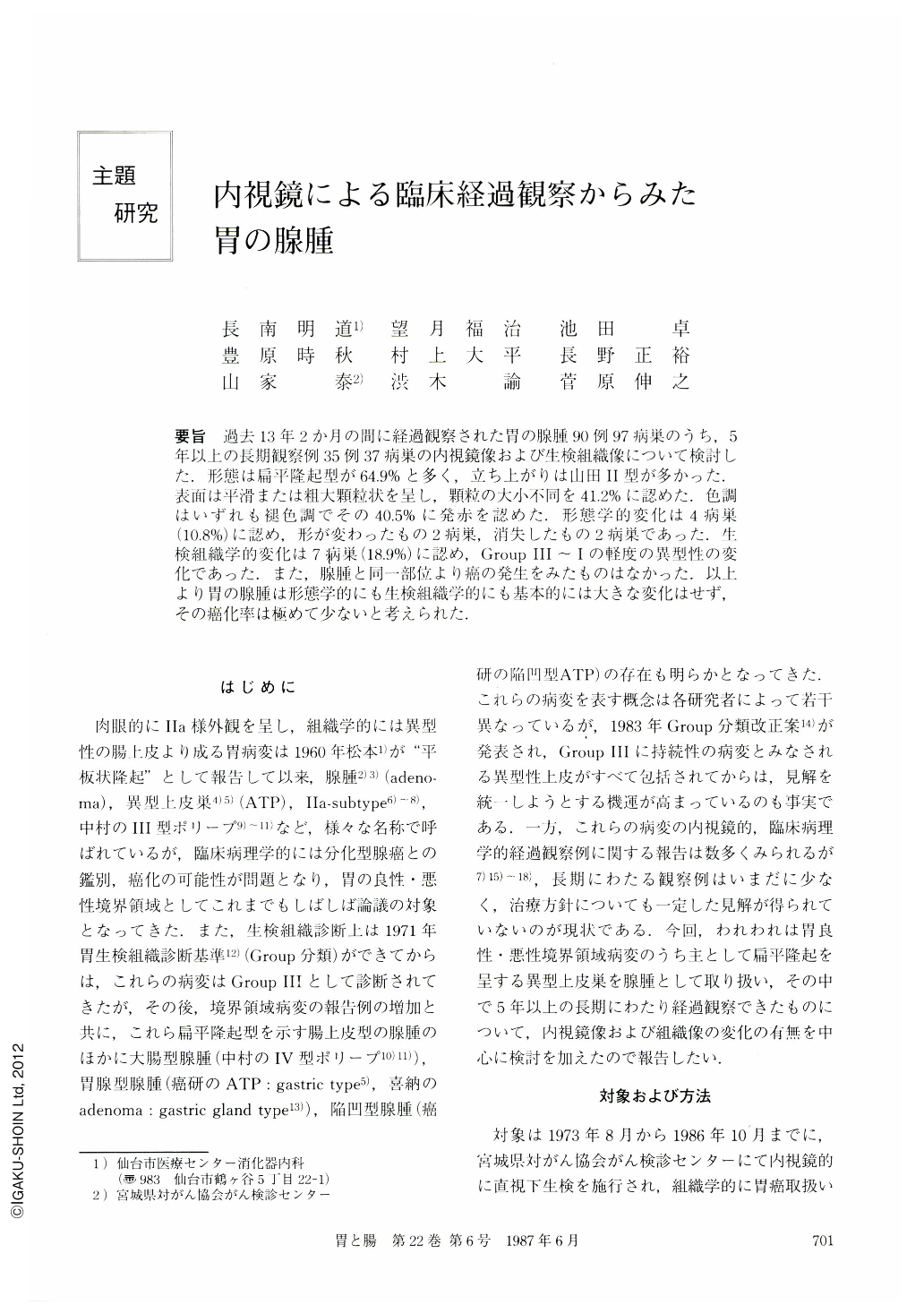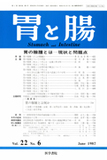Japanese
English
- 有料閲覧
- Abstract 文献概要
- 1ページ目 Look Inside
- サイト内被引用 Cited by
要旨 過去13年2か月の間に経過観察された胃の腺腫90例97病巣のうち,5年以上の長期観察例35例37病巣の内視鏡像および生検組織像について検討した.形態は扁平隆起型が64.9%と多く,立ち上がりは山田Ⅱ型が多かった.表面は平滑または粗大顆粒状を呈し,顆粒の大小不同を41.2%に認めた.色調はいずれも褪色調でその40.5%に発赤を認めた.形態学的変化は4病巣(10.8%)に認め,形が変わったもの2病巣,消失したもの2病巣であった.生検組織学的変化は7病巣(18.9%)に認め,GroupⅢ~Ⅰの軽度の異型性の変化であった.また,腺腫と同一部位より癌の発生をみたものはなかった.以上より胃の腺腫は形態学的にも生検組織学的にも基本的には大きな変化はせず,その癌化率は極めて少ないと考えられた.
We have experienced 97 gastric adenomas in 90 patients in the past thirteen years. Of these, 37 lesions in 35 patients were endoscopically followed for more than five years. The lesions were classified according to endoscopic appearance (Fig. 4) with mucosal surfaces and profiles being analysed. Serial biopsy specimens were also followed histologically to see whether any change occurred or not. The results were as follows.
Flat elevated gastric adenomas, type 1 or type 6 in Fig. 4 accounted for 65.9% of the adenomas, and the majority of which corresponded to Yamada's type Ⅱ (Table 5). The mucosal surface in these cases showed either smooth or rough granular pattern. Lesions with various sized granules accounted for 41.2% of the lesions with rough granular surfaces. The surfaces of gastric adenomas appeared to be discolored with local redness seen in 40.5% of the adenomas, but none showed white coating or bleeding (Table 6). During the follow-up period, changes in endoscopic appearance were observed in four lesions (10.8%). These changes were either those in configuration or disappearance of the lesion (two each), but none increased in size (Fig. 5). Histology of the biopsy specimens showed mild changes in seven lesions (18.9%) (Group Ⅰ-Ⅲ in Group classification). However, none became malignant, i.e., Group Ⅴ (Table 4).
These results suggest that the growth of gastric adenomas is very slow and that endoscopic appearance and histology do not change over the time in the majority of the cases.

Copyright © 1987, Igaku-Shoin Ltd. All rights reserved.


